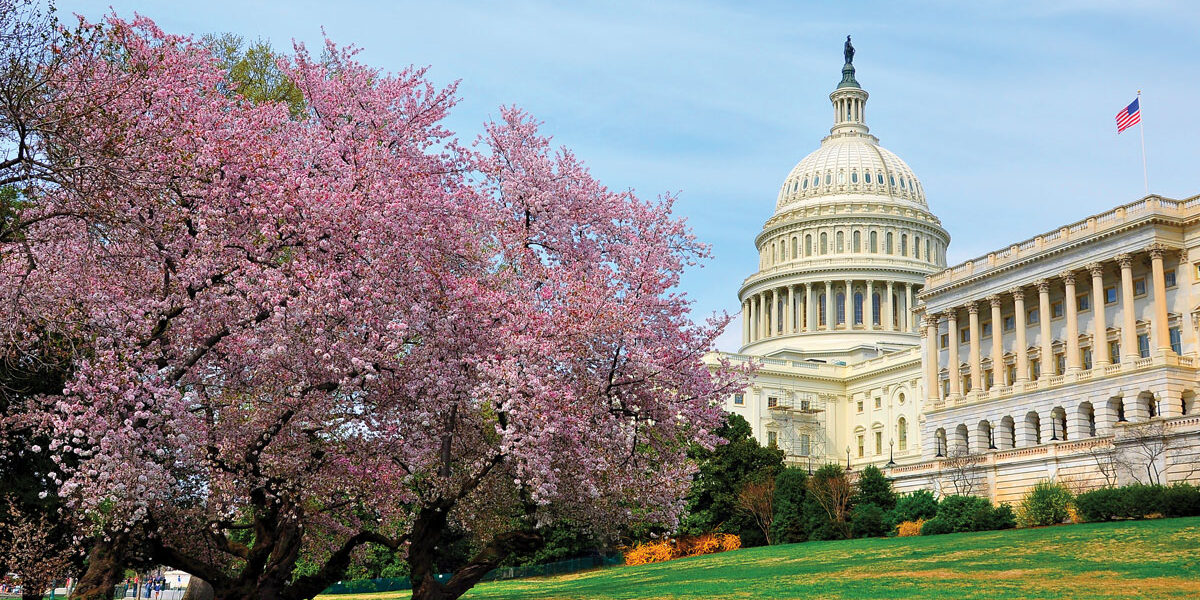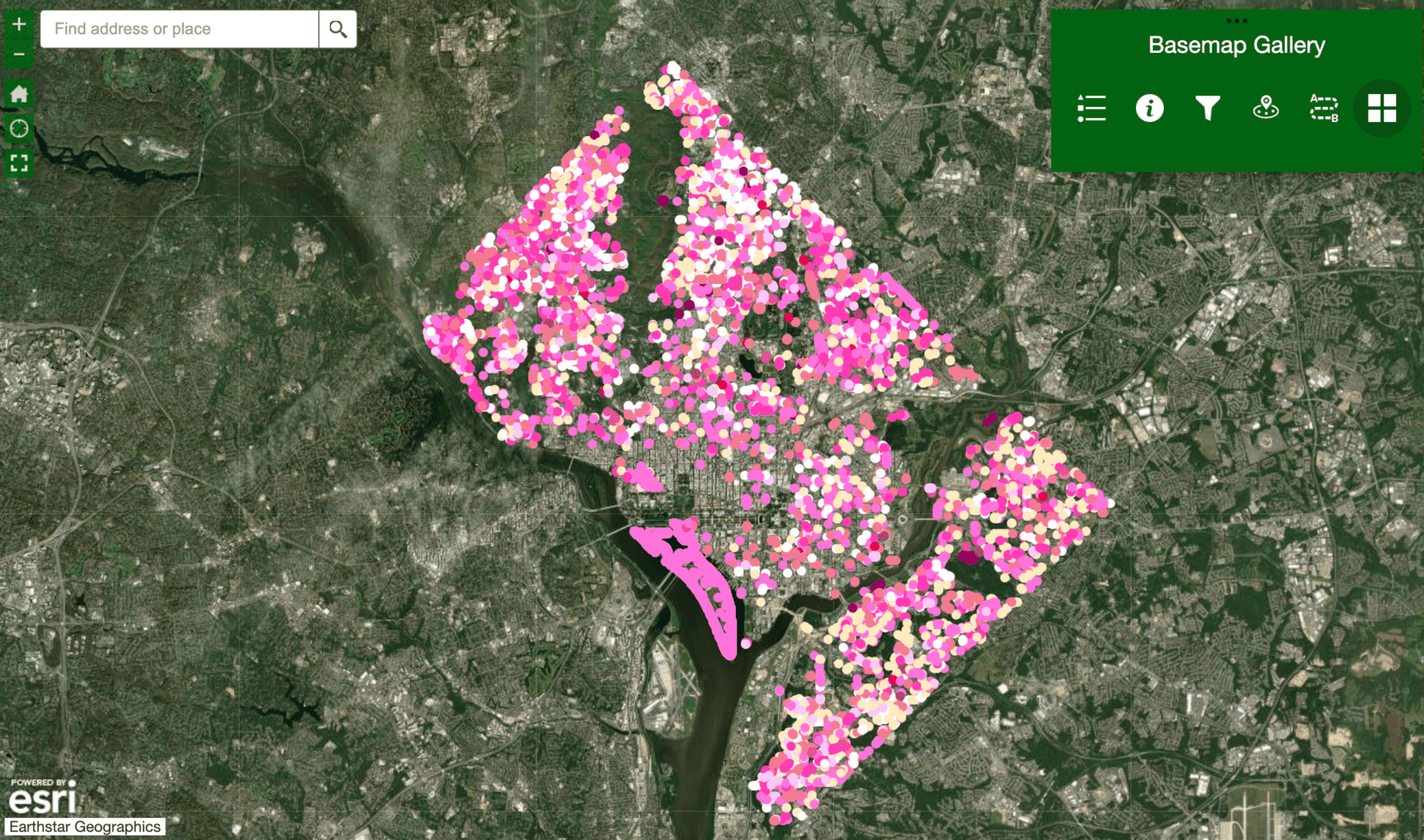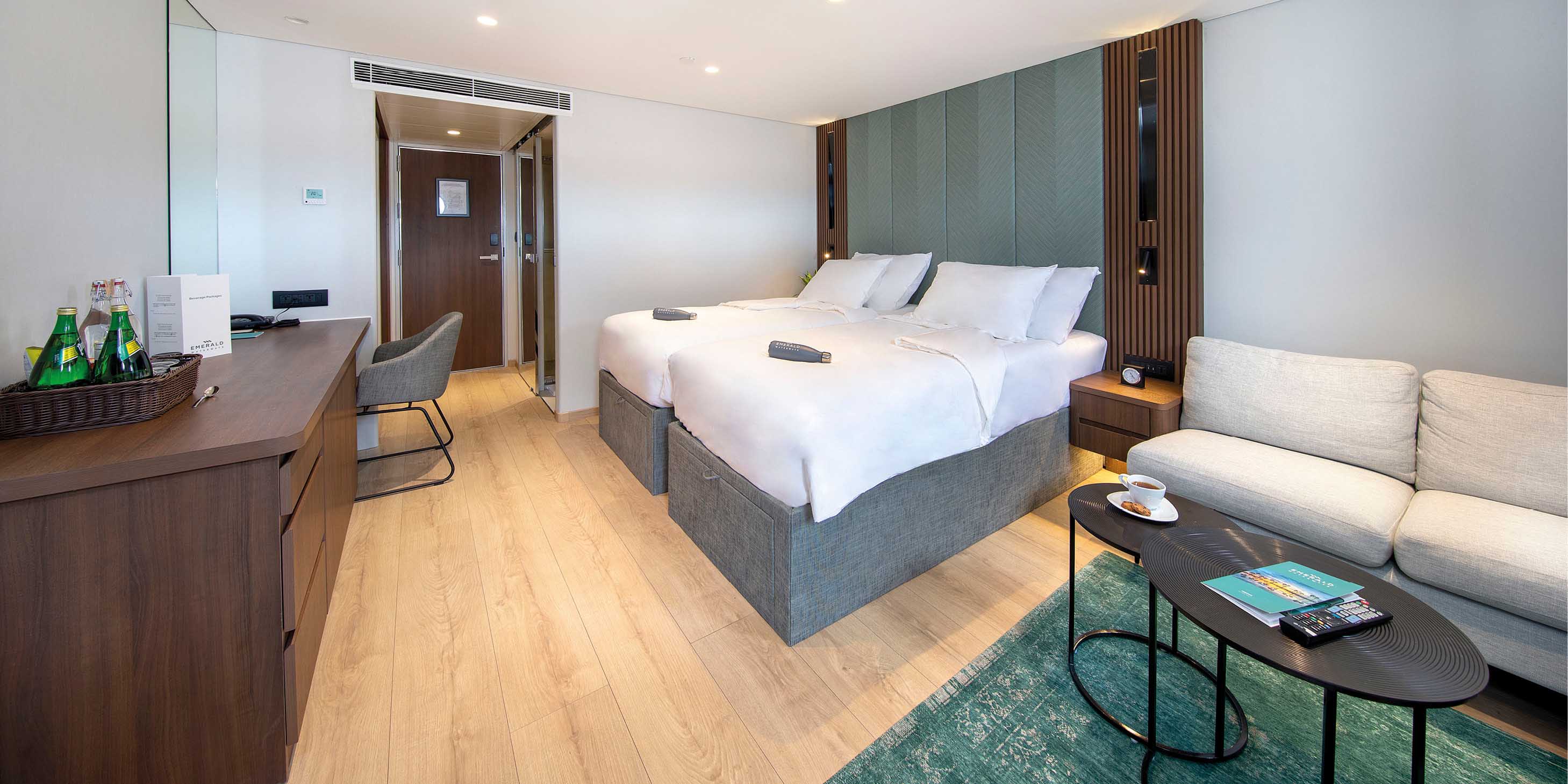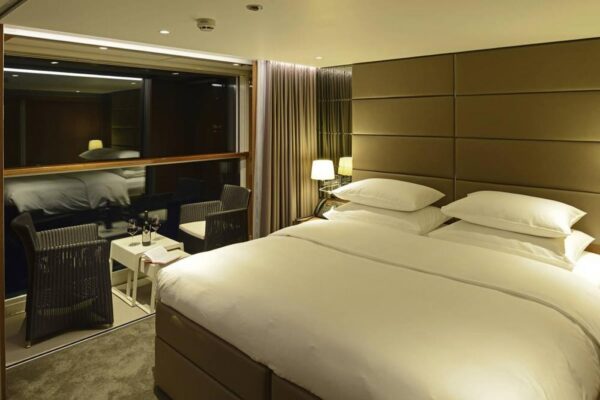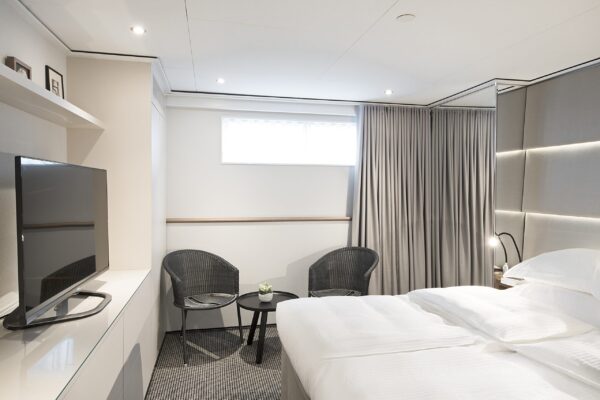Secrets of the Cherry Blossom Festival
The annual Cherry Blossom Festival carries with it a century of pride, preservation, and reverence for cherished trees within our Nation’s Capital. The cultural and visual impacts of these trees have delighted generations, but there is so much more to them than the beautiful blooms we see each year.
As an arboreal hobbyist in Illinois, I began researching this article from the standpoint of the trees themselves. While there is a story to be told of how these lovely trees came to be planted in Washington DC, there is also a story of the small army of tree care specialists that manage their modern upkeep and maintenance.
The History Of The Washington Cherry Trees
In a sign of unity between people, more than 3000 cherry trees were gifted to Washington DC in a sign of coordination between the governments of Japan and the United States. The trees were strategically placed around the Capital Parks and the historic memorials.
The Cherry Trees Came Well Before the Festival
In 1885, the first plan to plant and promote Japanese Cherry trees was brought by Eliza Ruhamah Scidmore as she returned home from a trip to Japan. She approached members of the Army and the Superintendent o Public Grounds to ask permission to plant Cherry trees along the Potomac. Her suggestion was denied for the next 24 years as she proposed it at each meeting.
He determination and promotion of the species won out though. Several private buyers decided to import these trees she spoke so highly of. Locals in Maryland even put hundreds in their town and schools as a means of beautifying the area of Arbor Days.
By 1909, Scidmore decided to raise the money to buy cherry trees and donate them to the District. She raised the money to purchase 1000 trees to plant along what would become Ohio Ave. She alerted by letter First Lady Taft of her intentions. By chance, the first lady was also meeting with a famous Japanese chemist who had heard word of the intent to plant the trees. He asked the First Lady if she would accept an additional 2000, which she graciously accepted.
The first shipment of trees arrived in 1910 but were unfortunately infested with insects and parasites that forced authorities to burn them before they could be planted. Undeterred, the city of Tokyo sent even more from the finest cultivars and root stock available. In all 3020 trees were sent and arrived in Washington DC on March 26, 1912.
In 1915, in gratitude for the gift of cherry trees, President William Howard Taft sent a gift of dogwood trees to Japan. Because those dogwoods have since died, Ohio Governor Bob Taft took the opportunity to re-enact his grandfather’s gesture. In 2000, he gifted 50 dogwood trees to the Diet Building in 1’01.’),0 and Saitama, Ohio’s sister state.
The Office of First Lady
In a simple ceremony on March 27, 1912, First Lady Helen Herron Taft and Viscountess Chinda, wife of the Japanese ambassador, planted the first two trees from Japan on the north bank of the Tidal Basin in West Potomac Park. Since the tradition began with a First Lady, the role of her office has been a prominent and steadfast aspect of the festival since its inception. The two trees are still alive today and are marked for the public. An annual tribute is made to them at each Cherry Blossom Festival.
In all 12 cultivars of the gifted cherry trees were planted around the Capital. From 1912-1920, they were planted in sections that were specific to each cultivar. This grouping ensures that each area will be presented so that the blooming periods of each location will be perfectly synchronized.
In 1965, First Lady, Lady Bird Johnson, accepted an additional 3,800 Yoshino trees from the government of Japan and held a tree planting reenactment. Many of these trees were planted in the area of the Washington Monument.
All first ladies in recent years have served as Honorary Chair of the Cherry Blossom Festival, many participating as well. In 1999, First Lady Hillary Clinton took part in a tree planting ceremony. In 2001, First Lady Laura Bush greeted guests with remarks at the Opening Ceremony. Honorary Chair First Lady Michelle Obama was involved in 2012, planting a cherry tree in West Potomac Park among dignitaries and guests.
A year after they were planted, the first blooms were had on those first trees. 10 years later (2024 to be the 111th), they are still blooming with annual delight and celebrated with each Cherry Blossom Festival.
The Cherry Blossom Festival Itself
The National Cherry Blossom Festival commemorates the 1912 gift of 3,000 cherry trees from Mayor Yukio Ozaki of Tokyo to the city of Washington, DC, and celebrates the enduring friendship between the people of the United States and Japan. Today’s Festival now spans four weeks and welcomes more than 1.5 million people to enjoy diverse and creative programming promoting traditional and contemporary arts and culture, natural beauty, and community spirit. Events are primarily free and open to the public.
While many of the events within it are free and open to the public, it is important to check on the specific events you wish to take part in. There’s no shortage of events to choose from. A full list can be found here. There are also some specific activities that take place at each annual Cherry Blossom Festival that can be enjoyed along with the festival.
Student Art Showcase
Visit the online gallery featuring last years winners and sign up for the this year’s Student Art Showcase produced in collaboration with DC Arts & Humanities Education Collaborative! At this year’s Cherry Blossom Festival, they invite DC student artists to portray what it means for them to be in full bloom.
Funducation for Kids
The Cherry Blossom Festival includes many family friendly events, but also includes online learning activities to ensure the next generation is able to learn and enjoy the trees as well. The “Blossom Kids” page is available as an online repository of fun-ducation videos, crafts, and activities that explore the history of the National Cherry Blossom Festival, highlight DC, celebrate springtime, and more with the help of participating local organizations.
The tree planting program.
Annually, the Neighborhood Tree Planting Program collaborates with schools, civic groups, and community groups throughout DC’s eight wards and National Landing in partnership with Casey Trees to plant new trees and educate groups about tree care and maintenance. The Cherry Blossom Festival has successfully assisted in planting hundreds of trees in the District.
Gift of Trees Patch Program
Developed in partnership with Girl Scouts of Nation’s Capital and the National Cherry Blossom Festival, this patch program commemorates the gift of the cherry trees and the enduring friendship between the United States and Japan. Click here to explore the patch program!
Maintaining The Washington Cherry Trees
Finding information on who maintains these trees proved a bit more difficult than one would assume. Since these trees are planted within the National Parks areas, the National Mall, The City of Washington, throughout the District of Columbia, the Trust for the National Mall, and within the National Arboretum, there are several offices and points of contact to be made for finding specific information about their care.
Fortunately, after a few calls and emails, I was put in touch with Joseph Meny, a Horticulturalist with the US National Arboretum in Washington DC. He referred me to several articles relevant to the trees themselves and to their care.
For purposes of propagation the most common method is to simply root the trees with traditional rooting hormone as they are generally easy to clone via cuttings. For rooting base, he said they prefer to use a mixture of 1 to 1 perlite and peat moss. While grafting would be an option in certain instances, for their purposes at the National Arboretum, it isn’t needed as the primary reason we propagate our germplasm through cuttings instead of grafting is because our resources allow us to utilize this method in-house. Grafting, on the other hand, requires us to reach out to outside sources which limits our flexibility with timing and incurs additional costs. Also, cuttings provide an added layer of long-term security for our germplasm; grafted material can be lost due to graft failures or incompatibility issues down the road, leaving you with nothing but rootstock behind. It should be noted that the National Arboretum maintains members of the original Yoshimo Cherry tree lineage of gifted trees as part of their genetic banking program.
Joseph also suggested that I read the following article from the National Mall which details how Matthew Morrison and his team of arborists maintain the 20,000+ trees on the National Mall and Memorial Parks, including the nearly 4,000 resident Cherry Trees. The article details the fundamental care and improvements made to ensure that these trees are available for the public today and tomorrow.
The team charged with the care of these trees employ traditional tree care techniques but incorporate modern data services to ensure that they can monitor and track the health of each individual tree. Using their Geographic Information System (GIS) they can maintain critical data on each tree to ensure that the trees are cared for on an individual basis.
Every single tree logged into our GIS system and that we have accurate data documenting each tree including an identifying photo, hazard analysis, field notes, health and safety concerns [as a] form of mitigation and a level of urgency. These data entries combined with budget and cyclic monitoring information are at the nucleus of the decisions I make that keep the park visitors safe and the trees healthy… As sappy as it may sound, my mission is that all our workers and visitors go home as healthy as they arrived and that we leave a good healthy park as a legacy for future generations to come.
While there is so much valuable information to be shared in the article from the National Mall, this video sums up the main purpose of why the preservation of these trees is so important.
Adopt A Cherry Tree
The cost to maintain and care for the Cherry Trees far exceeds the federal support they receive. Public-private partnership was critical to bringing the trees to Washington and is needed now more than ever for their ongoing care.
The Trust has a financial goal to raise $1000 to endow each tree over the course of its lifetime. With 3,700 cherry trees on the National Mall, raising $3.7 million is an ambitious goal. Raising funds for their care is another great cause highlighted by the Cherry Blossom Festival. Your support today moves us closer to reaching our goal tomorrow. You can make an individual gift, start or join a crowdfunding team, and receive recognition for your support. Each donation benefits the Trust’s Adopt a Cherry Tree Campaign, which supports the National Park Service’s year-round care and maintenance to help protect these iconic trees.
The Cherry Trees belong to all of us. The Trust seeks ambassadors who share our commitment to environmental sustainability and who are willing to join our mission to preserve this cultural landscape and living symbol of friendship and diplomacy. To adopt a Cherry Tree, please click here.
Spotting The Cherry Tree Cultivars
Hopefully this article has enlightened you on some of the amazing and culturally significant meaning of these amazing trees. In your visit to the National Cherry Blossom Festival, we hope that you get to enjoy them with the knowledge that you’ve gained here. While touring the Cherry Blossom Festival, be sure to keep your eyes open for the multiple cultivars of Cherry Trees that were included in the collection.
Cherry Tree Field Guide
![]()
Yoshino Cherry (Prunus x yedoenis) – Approximately 70% of the total number of cherry trees in the park.
Habit: a round topped, wide spreading tree that reaches 30 to 50 feet at maturity.
Flowers: white, single in clusters of 2 to 5, and almond-scented.
History: This hybrid cherry of unknown Japanese origin was first noticed in Tokyo about 1872 and is now one of the favorite cultivated cherry trees of Japan. Zone: Hardy to USDA Hardiness Zone 6: Range of average minimum temperature 0 to -10 degrees Fahrenheit.
![]()
Kwanzan Cherry (Prunus serrulata “Kwanzan”) Approximately 13% of the cherry trees in the park.
Habit: an upright-spreading tree to 30 feet, with a rounded crown and stiff ascending branches.
Flowers: double, with about 30 petals, in pendulous clusters of 3 to 5, sometimes more, clear pink and fading but small, up to 2½ inches across, with many more or less petaloid stamens often partly concealing the two green leafy carpels which protrude from the center of the flower.
Zone: Hardy to USDA Hardiness Zone 5: Range of average minimum temperature -10 to -20 degrees Fahrenheit.
![]()
Akebono Cherry (Prunus x yedoensis “Akebono”) Approximately 3% of the cherry trees in the park.
Habit: a round topped, wide spreading tree that can reach 30 to 50 feet at maturity.
Flowers: single, pale pink that fade to white, in clusters of 2 to 5.
History: This cultivar is losing popularity in the nursery trade and is being replaced with the cultivar Afterglow (Prunus x yedoensis “Afterglow”) which has pink blossoms that are deeper in color.
Zone: Hardy to USDA Hardiness Zone 6: Range of average minimum temperature 0 to -10 degrees Fahrenheit.
![]()
Weeping Cherry (Prunus Subhirtella var. pendula) Approximately 2.4% of cherry trees in the park.
Habit: tree 20 to 40 feet high, with a round-flattened, gracefully, weeping crown.
Flowers: single, pink. This variety is very variable and select cultivars differ in form and color. (i.e., “Pendula Rosea”, single deep pink flowers; “Pendula Plena Rosea”, double, pink flowers; “Pendula Alba”, single, white flowers; “Rosey Cloud”, double, bright pink flowers; “Snowfozam”, single, white flowers etc.). Zone: Hardy to USDA Hardiness Zone 5: Range of Average minimum temperature -10 to -20 degrees Fahrenheit.
![]()
Takesimensis Cherry (Prunus takesimensis) Approximately 5% of cherry trees in the park.
Habit: an upright spreading tree that can reach 30-40 ft. at maturity.
Flowers: white, in large clusters with short pedicels.
History: This species is known to grow in wet locations in its native habitat and is currently being tested in East Potomac Park for tolerance to excessive moisture.
Zone: Hardy to USDA Hardiness Zone 6: Range of Average minimum temperature 0 to -10 degrees Fahrenheit.
![]()
Autumn Flowering Cherry (Prunus subhirtella var. autumnalis) Approximately 3% of cherry trees in the park.
Habit: an upright rounded tree to 25-30 ft. with a 15-20 ft. spread.
Flowers: semi-double, pink. During warm periods in the fall and winter months they will open sporadically and then fully flower the following spring.
Zone: Hardy to USDA Hardiness Zone 4: Range of average minimum temperature -20 to -30 degrees Fahrenheit.
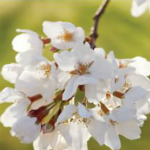
Usuzumi Cherry (Prunus spachiana f. ascendens) Approximately 1.3% of cherry trees in the park.
Habit: tree to 40 ft. with a round, gracefully ascending crown.
Flowers: single, white, truning to grey.
History: The trees in West Potomac Park are propagations from the 1,400+ year old Usuzumi tree growing in the village of Itasho Neo, in Gifu Prefecture of Japan. The Usuzumi tree was declared a National Treasure of Japan in 1922.
Zone: Hardy to USDA Hardiness Zone 6: Range of average minimum temperature 0 to -10 degrees Fahrenheit.
![]()
Sargent Cherry (Prunus sargentii) Less than 1% of cherry trees in the park.
Habit: Upright to 40-50 ft. with spreading branches approximately equal to height.
Flowers: single, deep pink, in clusters.
Zone: Hardy to USDA Hardiness Zone 4: Range of Average minimum temperature -20 to -30 degrees Fahrenheit.
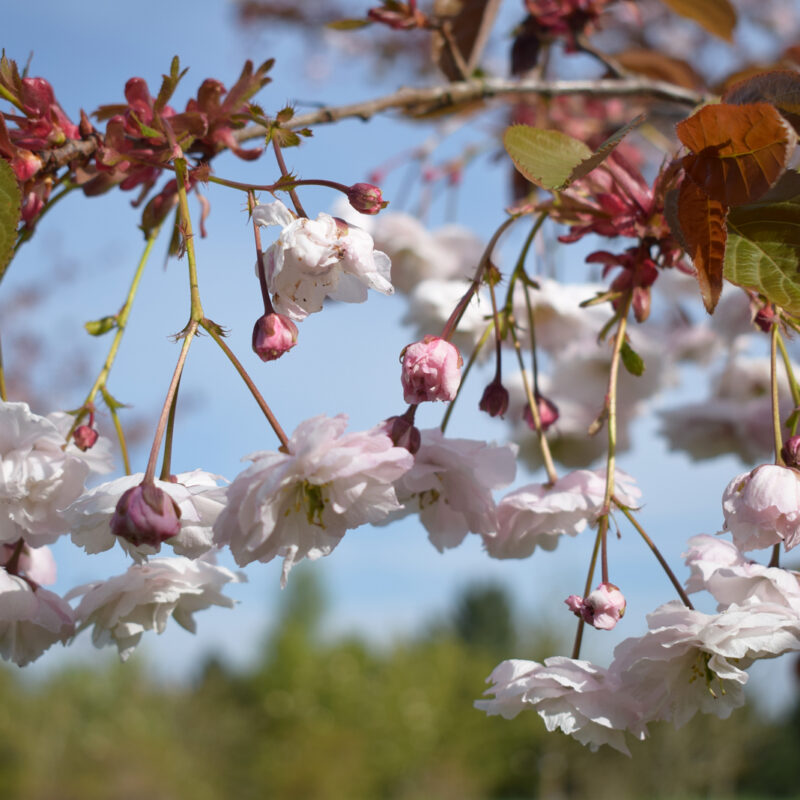
Fugenzo Cherry (Prunus serrulata ‘Fugenzo’)
Habit: up to 20 feet high and 20 feet wide, with a broad crown, often flattened and with the branches intercrossing horizontally.
Flowers: double, about 30 petals, rose pink, becoming lighter with age but never white, up to 2 inches across, in pendulous clusters of 4 to 6. This is one of the oldest cultivated cherry trees in Japan.
Zone: Hardy to USDA Hardiness Zone 6: Range of Average minimum temperature 0 to -10 degrees Fahrenheit.
![]()
Shirofugen Cherry (Prunus serulata “Shirofugen”) Less than 1% of cherry trees in the park.
Habit: a flat topped, wide spreading tree to 20-25 ft.
Flowers: double, in large clusters, white when open aging to pink.
Zone: Hardy to USDA Hardiness Zone 5: Range of Average minimum temperature -10 to -20 degrees Fahrenheit.
![]()
Okame Cherry (Prunus x “Okame”) Less than 1% of cherry trees in the park.
Habit: Upright tree to 25 ft. with a 20 ft. spread.
Flowers: semi-double, pink. The earliest flowering cherry.
Zone: USDA Hardiness Zone 5: Range of Average minimum temperature -10 to -20 degrees Fahrenheit. USDA Hardiness Zone 6: Range of Average minimum temperature 0 to -10 degrees Fahrenheit.
For those looking for a complete map of Cherry trees throughout the District of Columbia, this map by Casey can be a great resource during the Cherry Blossom Festival.
https://caseytrees.maps.arcgis.com/apps/webappviewer/index.html?id=6b44d537d8fe49eebdc41c9e2c21ee9e


